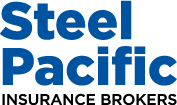Insurance has never been the most exciting industry when it comes to technology or innovation. Even if insurers exist to underwrite risk, they are risk averse when it comes to adopting newer technology or, accepting innovation. However unlike before, we are starting to see a significant change in the way insurers are embracing the change whether through technology or, other innovations. A large part of this change of heart is driven by the following factors.
- The “outside-in” driver, where consumer is forcing the insurers to change based on what they expect from their insure
- Non-traditional players inching into insurer’s territory
- The invasion of technology changing the way risk is perceived, measured and accounted fo
- The disappearance of the dividing line between industries and the ease with which customers move across these industries
Here’s look at some of the technology trends and how they impact the insurance industry.
Wearable technologies: Wearable technologies like Google Glass or, nearables are increasingly finding usage with insurers. In my view, Google Glass in its earlier version probably was slightly ahead of it’s time. But there is no denying the benefits it can bring to the insurers. Google hasn’t abandoned it’s plan around Google glass and as of now, there is version 2 being launched. The areas where it could impact insurers are
- Improve claims adjuster and risk engineer productivity by automating the tasks performed to a large extent
- Enhance the claims experience for the insurer through tasks like automation of first notification of loss, providing photographic/video evidence of loss directly after the loss etc.
Erie Insurance in USA has successfully piloted use of Google glass for it’s claims adjusters for home and auto claims. This has received positive reviews from both adjusters and customers alike.
Travel insurance companies have started working with airline operators to use nearables on Traveller’s checked-in baggage to prevent loss of baggage and thus reduce insurance claims.
Drones/UAV: Insurers are all set to leverage drones to increase operating efficiency and safely obtain loss information. Drones are increasingly become cheaper, more reliable, sophisticated but easy to operate thus increasing their usage in supplementing insurer’s operation in risk or loss assessment in difficult situations for normal staff to get into. The areas where it can help insurers are
- Improve safety of claim adjusters or risk engineers in collecting information from inaccessible or, dangerous areas after a loss event or, a catastrophe
- Improve customer experience during catastrophes like flood, bushfire, earthquake etc
- Prevent fraud during underwriting or, claims involving large or inaccessible areas like agricultural farms
USA used drones in conjunction with Texas A&M University’s Roboticists without borders to survey after a mudslide consumed a nearby rural neighborhood. It also received exemption to send a PrecisionHawk Lancaster drone to collect images and data post disasters.
StateFarm, AIG, and Erie Insurance have also been granted exemptions by FAA, allowing for the testing or use of drones commercially
Internet of Things: The Internet of Things (IoT) is a scenario in which objects, animals or people are provided with unique identifiers and the ability to transfer data over a network without requiring human-to-human or human-to-computer interaction. Connectivity which will impact the insurers the most are from Connected car, connected home or connected self.
Connected Cars/Telematics/ Usage based insurance(UBI): Telematics car insurance, often called black box insurance, helped in developing pay-as-you-drive, or pay-how-you-drive insurance models. This could change the way Insurers engage with customers starting with tailored products, reduced premiums and improved claims experience. The areas where it can help insurers are
- Improve auto insurance pricing by rewarding good driving behavior, making it affordable for safer drivers while reducing cross-subsidisation of bad drivers
- Efficient claims adjustment through reconstruction of accident events
- Transform claims handling by automation of first notification of loss and automation of incident information submission
Progressive Insurance in US is the pioneer in UBI and writes more than USD1bn worth of premium from UBI alone. Progressive offers Snapshot, a wireless device to plug into an OBD II port and it records and transmits time, speed and harsh braking incidents.
QBE in Australia has started rolling out UBI for its customers which rewards the customer based on how they drive.
Connected homes: By 2025, half of US households will be IoT enabled with integrated monitoring and control solutions, providing opportunity for insurers. Home insurance companies are incentivizing customers to install connected devices that warn of potential danger to properties
American Family Insurance and Microsoft launched a “business accelerator” for tech start-up firms focused on home automation. It will provide industry experience, consumer insights and homeowner knowledge to companies focused on building safer and smarter homes
In October 2012, USAA patented a device that could be installed at homes which enables tracking various parameters, such as temperature, wind speed, mechanical vibration and humidity, which can lead to damages for an insured home.
Robotics: The insurance industry is only starting to engage with the next generation of robotics technology and not enough robots are sold to provide the critical mass of data that insurers need. However the potential to leverage is huge in areas like claims.
In order to inspect a large industrial fire in Pine Bluff, Arkansas, in 2014, Donan and the carrier, Union Standard Insurance Group, a W.R. Berkley Company, decided to deploy Scio to streamline investigation and claims handling processes. Donan introduced Scio Surveyor 7, a military-grade Packbot, the first unmanned ground vehicle to be used in a forensic property investigation. Scio’s specialized cameras and components made it ideal for inspecting structurally unsound buildings, confined spaces and hazardous environments.
Source: The Australian
